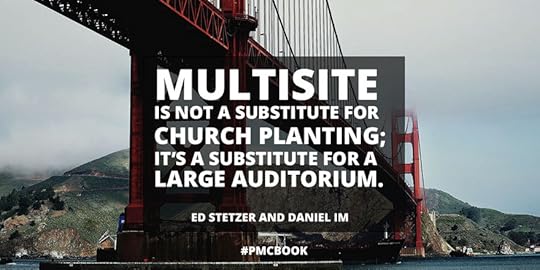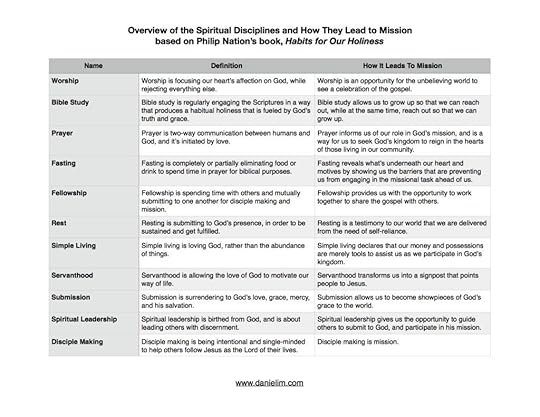Daniel Im's Blog, page 24
May 31, 2016
Two Ear Active Listening

There’s this old episode from Everybody Loves Raymond where Debra (Ray’s wife) is scolding their daughter, Ally, because she ripped her brother’s giraffe. When Ray walks into the house, and sees that they’re fighting, he runs to the scene with joy exclaiming, “Oh great!”
“This is Michael’s giraffe and he’s crying, so why did you do it?” says Donna.
Ally responds back, with folded arms, and pursed lips, “Because!”
Donna then says, “Because is not an answer!”
It’s at this point, that Ray responds with, “Active listening. It works. I use it on the worst kids in the neighborhood!”
While the live audience is chuckling to themselves, Ray then goes on to coach his wife—in real time, while she’s trying to talk to Ally—by telling her how she needs to reflect back instead of accuse, while also be accepting, instead of judgmental.
Saying Versus Hearing
Active listening is one of those things that is often made fun of because it seems so elementary and basic. “Why should I repeat back exactly what the other person said? They heard themselves and so did I!” This is one of the common objections that people share while learning the skills of active listening. However, the fact of the matter is, just because something is said, doesn’t mean that we all hear it the same way.
We see this most with children—they are the best at selective listening. For example, we might say, “Go and clean up your room, before we get ice cream,” but they probably heard, “Blah, blah, blah, ice cream.” It’s reminiscent of Charlie Brown’s teacher, isn’t it? Or how about in meetings when someone is rattling off information that doesn’t relate at all with your area—how often do you remember what they say?
Most of us are better at selective listening, than we are at active listening…hence this article.
Active listening is about being fully attentive to the other person during a conversation. While it might require you to verbally reflect back what the person just said—“If I heard you correctly, you are trying to say…”—oftentimes you can convey that you’re listening with your body language as well.
After all, 93 percent of communication is “non-verbal” in nature, according to a UCLA study conducted by Dr. Mehrabian.
SOLER
Gerard Egan developed something called the SOLER theory in 1986 to easily describe the non-verbal techniques required for active listening. He defines SOLER as “micro-skills” that allow you to convey to the other party that you care for them and are present, without using words.
S – Sit up straight
Face the person squarely, rather than sitting to the side or slouching back.
O – Open your body posture
Don’t cross your arms because this often connotes that you’re closed or skeptical of the other person’s opinion.
L – Lean forward slightly in your chair
Leaning forward during serious moments or moments of self-disclosure can express trust and confidence.
E – Eye Contact
Eye contact means something different in every culture. For example, in many Eastern cultures, eye contact is considered a challenge to authority, or an intimate gesture. So use this one accordingly.
R – Relax
Be relaxed in your mannerisms and be cognizant of your facial expressions while the other person is talking.
In essence, active listening is quite simple because it can be reduced down to these four things:
Put down your phone
Talk less
Listen more
Ask questions
Now what is Two-Ear Active Listening, as indicated by the title of this article?
I came up with this phrase, Two-Ear Active Listening because leading and discipling others is not as simple as listening and responding with our opinions.
If we truly want to lead, disciple, mentor, coach, and care for others, this requires one ear open to them, and the other ear open to the Holy Spirit.
As a result, whenever I’m in a conversation with another person, I’m always prayerfully asking God for His wisdom and His words. I’m constantly looking for phrases that stick out, or expressions that seem off or different. I’m asking God to speak to me and through me, so that I can be a blessing to others and be a tool for God to use.
So there you go. Try it this week. Next time you’re in a conversation with another person, employ the SOLER skills, while keeping an ear open to what the Holy Spirit might want to say to you and through you.
The post Two Ear Active Listening appeared first on Daniel Im.

May 24, 2016
Why We Need to Be Mean About The Vision

A Personal Conversation with Shawn
I remember having a conversation with Shawn Lovejoy a year after starting my new position with LifeWay Christian Resources. I had moved my family down to Nashville, TN to figure out how LifeWay was going to resource church planters, multisite churches, and multiplying churches (we started NewChurches.com as a result).
So we were together at the Exponential conference, and Shawn asked me, “How’s everything going?”
I just responded the way I normally do with a big grin, “It’s going great!”
But then, he stopped, looked at me straight in the eyes and asked me one more time, “How’s everything going?”
I remember thinking to myself, Shawn’s a really nice guy, and I enjoy working with him, but why is he asking me this question again?? We’re in a public place at a conference…does he expect to “counsel” me here?
Sure, I was feeling pretty overwhelmed, but who wasn’t anyway? After all, in the previous months, I was rewriting Planting Missional Churches with Ed Stetzer, developing and launching the strategy for NewChurches.com, leading a major software redevelopment initiative with the North American Mission Board to better assess, train, and coach their church planters, launching The State of Church Planting research project, and now speaking four times at the Exponential conference, but this season was eventually going to pass, right?
I was at a conference and had to put my “game face” on, so who was Shawn to be confronting me like this? Well, the reality was, Shawn was just being himself. He was acting as a wise mentor who had travelled this path many times, and was seeing someone else who was heading down the same path.
So he looked at me and said, “I’ve been where you are bro, I’ve burnt the candle at both ends, and it just wasn’t worth it.”
At that, I decided it was time to sit down and have a real conversation with him.
A Mentor and a Guide
While reading Shawn Lovejoy’s, Be Mean About The Vision: Preserving and Protecting What Matters, I felt like we were back at that table all over again. In this book, not only does he share leadership wisdom and experience from his years of planting and leading a multiplying church, but he also guides the reader through this incredibly important topic of vision and leadership through questions at the end of each chapter, like this one,
Could my pace be silently killing off the vision in me?
In this book, Shawn serves as a mentor and guide to the reader through his honest stories and masterful questions. As a result, this book feels less like an information dump, and more like a transformational journey.
Ultimately, being mean about the vision is about being intentional. Shawn defines it well, “Being mean about the vision is about keeping our organization so focused on the goal that people are willing to sacrifice for it.”
Systems in Leadership
While there’s much to be gleaned in every chapter of this book, like how to identify and prevent vision hijackers from damaging your church, or how to transition your church from being attractional to being missional, or even how to simplify your church so that you are clear and focused on your vision, my favorite chapter was the sixth one because it was all about systems and structure.
In order to “keep the vision alive in others” (the title of chapter six), you need to first have a vision statement that is short and simple. Shawn suggests that the vision shouldn’t take longer than 10 seconds to share and that it shouldn’t be longer than one sentence. After all, “a vision is only as strong as it can be shared and applied.”
Once you have a simple and compelling vision statement, it’s important to communicate it so often and in a variety of different ways so that it becomes contagious and unstoppable. Here are a few of ways that Shawn suggests you can do this:
Have multiple mission moments. This is about sharing your vision and mission every Sunday during your worship service in a creative manner. You can also do this via email, video, and in your everyday conversations.
Orient the newbies. This is about ensuring every newcomer and staff member understands the vision, sees the vision, and has the chance to experience the vision. You can do this in your newcomer class as well as in your staff orientation.
Circle the wagons. This is about meeting with your leaders on a regular basis because “vision alignment among leaders requires two fundamental things: proximity and consistency.” When Shawn was pastoring Mountain Lake Church, he would meet with his direct reports weekly, the other pastors bi-weekly, the staff monthly, and the finance team and advisory team on a bi-monthly basis. He would also make sure that his pastors were meeting monthly with their own leaders, while meeting as a church semi-annually with every leader in all of their campuses.
Teach on vision. This is about aligning your preaching calendar around the vision statement of your church. For example, Mountain Lake’s vision was “Giving people a place to belong in a healthy relationship with God and others; become more like Jesus; and bless our world.” As a result, every teaching series they did was about either helping people belong, become, or bless.
Celebrate it constantly. This is about making celebration a regular part of your culture. After all, “what gets celebrated gets done, because what we celebrate communicates what we value…Being mean about the vision requires celebrating every time we see the vision happening in and around our organization.”
“All pastors are interim pastors. Every leader is an interim leader.”
In the last chapter of Be Mean About The Vision, Shawn shares how he transitioned from founding and leading a multisite mega church, Mountain Lake, to his new efforts with CourageToLead.com. The insights in this concluding chapter are worth the price of this book because thousands of churches in the upcoming years will have to figure out succession. After all, over 10,000 boomers are retiring daily in America! So imagine what would happen if we all began to see our current leadership positions as temporary ones, since “every leader is an interim leader”?
Here’s a sobering question,
If you knew you were leaving your organization in one year, and had no fear of losing your job, what decisions would you make? Here’s a thought: Why not make those decisions now? Leadership requires the courage and the character to do what needs to be done, regardless of the perceived costs or outcomes.
If I haven’t convinced you to get this book yet, let me just come right out and say it. Buy the book here and start Being Mean about the Vision!
The post Why We Need to Be Mean About The Vision appeared first on Daniel Im.

May 17, 2016
Trends for Church Conferences

Today, I am in New York speaking at the first-ever New City Gathering and spending time with my friend, Drew Hyun and his new network. Learn about the five values that they see as being critical for new churches here.
What’s interesting to me is that their church planting conference is brand new.
I’m not against new conferences, nor am I against church planting; after all, I serve as the Director of Church Multiplication for NewChurches.com! But, what’s fascinating to me is how the trend with church conferences seems to be heading in the direction of small, regional, and specialized.
Take the Catalyst conference for example. They grew their single location conference in Atlanta to 10,000+ attendees, and then started a West Coast version of it. Soon afterwards, they introduced smaller one day regionals across the country.
Exponential went the same route. They had their Exponential East conference of over 5000+ attendees, started a West Coast version of it, and are now introducing regionals in the U.S. and in other parts of the world.
The Verge Network did the same. After growing their Austin based conference to 3000+, they shut it down for a year, and have now opened up with a regional only strategy.
The SEND Network had a 10,000+ sized conference in Nashville last year, and are moving to a regional strategy this next year. They’ve decided to alternate between one big conference and smaller regionals every other year.
–> The tension that big conferences face is the push to generalize their content, in order to broaden their registration base.
–> The benefit of small conferences is knowing your target audience, so you’re able to specialize and specifically equip your niche audience with what they need.
So when I spoke at the V3 Praxis Gathering last year, there were less than 200 people, but their targeted focus was missional/incarnational practitioners passionate about disciple-making. You could never grow a conference to thousands and thousands based on this highly niche focus.
As I’m speaking at the New City Gathering this year, there will also be less than 200 people, but they are able to focus on church planters who are passionate about urban, multiethnic, spirit-filled, emotional health, and missional practice oriented ministry.
When I speak at the HCPN Gathering, they too will be under 200, but I will be able to speak specifically into what it looks like to multiply churches in the Houston area.
And when I speak at the LifeWay Leadership Pipeline Conference, though the first day will be a big conference, their second day experience will be under 100 so that we can consult and help churches develop and implement a leadership pipeline in their church.
Now don’t get me wrong. I’m not against big conferences. In fact, I’ve had significant God-moments in the course of my life during them. After all, worshipping together with 5000+ people oftentimes feels like heaven-on-earth. I’m merely reporting on the trend that I’m seeing with church conferences. And that trend is towards small, regional, and specialized.
What are your thoughts? Which would you rather attend? A small or large conference?
The post Trends for Church Conferences appeared first on Daniel Im.

May 10, 2016
Multisite AND Church Planting
Through the research LifeWay conducted surveying multisite pastors, we discovered a trend among many pastors considering multisite. For them, “the multi-site strategy [did] not replace any other method of participating in kingdom growth. It [did] not replace church planting, personal evangelism, visitation programs, investing and inviting, servant evangelism, or evangelistic training.”[1]
For them it was merely another strategy to reach their city:
Planting churches, building larger buildings, adding services, adding venues at your current site, and relocating a campus are all still viable solutions today. Multi-site does not replace these other solutions. It adds one more possibility for consideration.[2]
Some once believed this move to grow via multiple campuses was a temporary trend, but it appears to be a trend that’s here to stay. After all, there are more than 8,000 multisite churches in the US alone with more than 5 million people worshipping in them![3] While it was once the domain of only the largest megachurches, multisite is now a common option for smaller churches to consider. In fact, although a thousand is the average size of the church that goes multisite, many have gone multisite at eighty.[4]
What’s interesting though, is the number of churches that utilize a multisite methodology and are also committed to church planting. The two are definitely not exclusive of each other.
Take a look at these three different models that are committed to both multisite and church planting:
1. Both/And
The Summit Church in Durham, North Carolina, is passionate about multiplication and is using both church planting and multisite as strategies toward that end. Albeit The Summit did “stumble” onto multisite more than anything, as David Thompson, the lead pastor of executive leadership at The Summit explains:
When the church began running out of room at the high school, they decided to try a third service in the two hundred-seat church building [that was four miles down the road]. Pastor Greear would preach the first service at the high school. As soon as he finished preaching, he would walk off stage and jump into a car prepared to drive him to the old church. Four miles, a Mountain Dew and a Snickers bar later, he would walk immediately onto the stage and preach again. Immediately after preaching, he would get back in the car, return to the high school, and preach the second service. These were long and taxing days, but the church was committed to reaching people, and God continued to bring people.
When The Summit Church moved to a warehouse fifteen minutes away, they decided to keep the service going at the two hundred-seat church building in north Durham. They were determined to give it a shot and asked one of the pastors to consider hosting the service each weekend. They had no idea what a “campus pastor” was and had little vision for multisite, but they were willing to try just about anything. Around four hundred people took them up on the opportunity and thus began their journey down the multisite road.[4]
For The Summit, “multisite is not a substitute for church planting; it’s a substitute for a large auditorium.”[5] That’s why they are committed to both. J. D. Greear, the pastor of The Summit, explains their multiplication strategy: “It is our prayer that by 2050, God will allow us to put campuses within 15 minutes of everyone in Raleigh-Durham (with some rare but notable exceptions in places where a Summit campus might hinder the work of another local church), as well as 1000 churches planted in cities around the world.”[6]
2. Both/Then
Instead of the both/and approach to multisite and church planting that The Summit is employing, The Village Church in Flower Mound, Texas, is taking a both/then approach. Back when The Village Church was known as Highland Village First Baptist Church, Matt Chandler, the lead pastor, always had a vision that this church would be a church planting church. As the church grew, the elders at The Village decided to employ the multisite model instead of building one giant campus. As they continued to start new campuses, their existing ones began to mature to the point that the elders began praying about the possibility of seeing their campuses roll off and become their own autonomous churches. This first happened for them with their Denton campus in 2015. They see this as an opportunity to do both multisite and church planting by first establishing and strengthening campuses and then spinning them off as church plants when those campuses are ready. The Village is essentially “leveraging the typical multisite approach to, instead, plant more churches.”[7]
3. Both/Equal
Churches like NewLife Community Church in Chicago and Trinity Grace Church in New York are using the both/equal approach. Churches like them are allowing each of their campuses to have a considerable amount of autonomy with their own campus pastor who preaches, leads, and shepherds their campus like any church planter would their church. So in that sense the campuses are equal to church plants. However, those churches are then taking advantage of the benefits of multisite by cultivating a community of pastors where they can learn from one another, prepare their sermons together, and also draw from central administrative services.
Conclusion
I am not anti-multisite or anti-megachurch; after all, I’ve been a pastor at multiple multisite and megachurches, and am currently serving in a multisite church at the time of this writing!
What I am is anti-consumerism.
Church is not about being the best purveyor of religious “goods and services.” And if a megachurch or a multisite thrives by appealing solely to the “come and see” mentality that is so prevalent, we will all regret it.
No matter the number of campuses your church has, reproduction NEEDS to be the goal—reproducing believers, ministries, groups, and churches. That can be in a megachurch, multisite church, or, for that matter, in a simple church. So, if you are going multisite, make sure you stay focused on multiplying the mission of God—not just your brand of church or the reach of one person. Let’s make it more than projecting the image of a pastor on another screen.
*This is a modified excerpt from Planting Missional Churches: Your Guide to Starting Churches that Multiply.
Footnotes:
[1] Scott McConnell, Multi-Site Churches: Guidance for the Movement’s Next Generation (Nashville: B&H, 2009), Kindle ed., locs. 228–29.
[2] Ibid., 222–24.
[3]Warren Bird, “Leadership Network/Generis Multisite Church Scorecard: Faster Growth, More New Believers and Greater Lay Participation,” Leadership Network, accessed July 14, 2015, http://leadnet.org/wp-content/uploads... Scorecard_ Report_v2.pdf.
[4] McConnell, 222-24.
[5] David Thompson, “Propelling a Movement of Multiplying Churches from the Summit Church in Raleigh-Durham, North Carolina” (DMin Final project, The Southern Baptist Theological Seminary, 2014), 41.
[6] Ibid., 42.
[7] J. D. Geear, “Why The Summit Church Is Multi-Site,” June 3, 2013, accessed September 19, 2015, http://www.jdgreear.com/my_weblog/201....
[8] “Campus Transitions,” The Village Church, August 17, 2014, accessed September 19, 2015, http://www.thevillagechurch.net/sermo....
The post Multisite AND Church Planting appeared first on Daniel Im.

May 3, 2016
Top Quotes and Images for Planting Missional Churches
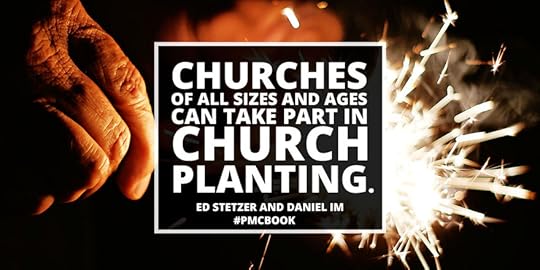
Here are my 11 Favorite Quotes for Planting Missional Churches: Your Guide to Starting Churches that Multiply:
Missional means being a missionary without ever leaving your city.
Church planters should be known first and foremost as people of integrity.
Success is measured in multiplication of churches and quality of disciples.
If your church is empty in a single location, it will still be empty with two locations.
Multisite is not a substitute for church planting; it’s a substitute for a large auditorium.
You cannot lead people to godliness when you are not regularly encountering God.
You cannot love a city if you do not know a city.
Without an intentional developmental approach, the church is likely to become a mile wide and an inch deep.
Everywhere Christians have gone to share the gospel churches were formed.
Churches of all sizes and ages can take part in church planting.
Your ultimate calling is not to plant a church; it’s a calling to come to Jesus himself.
I’d be honored if you shared these images with your friends and followers on your favorite social media platforms!
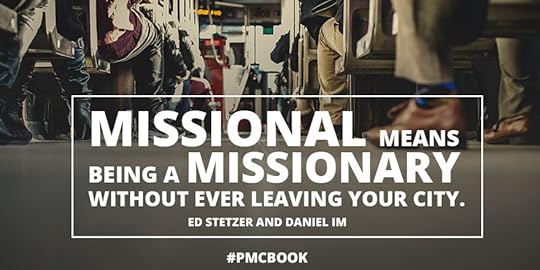
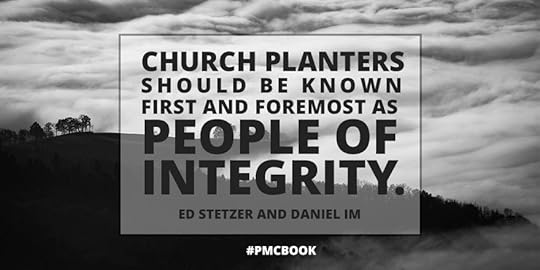
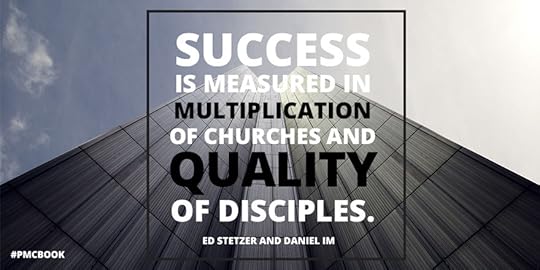
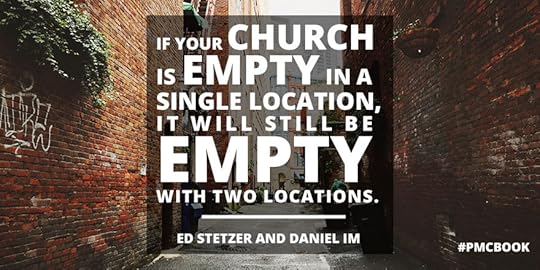
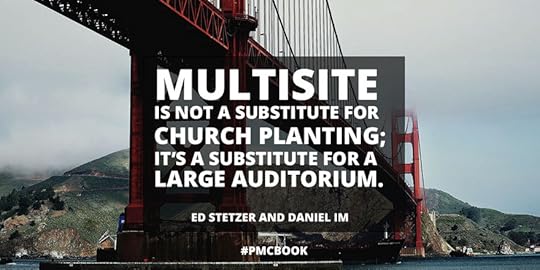
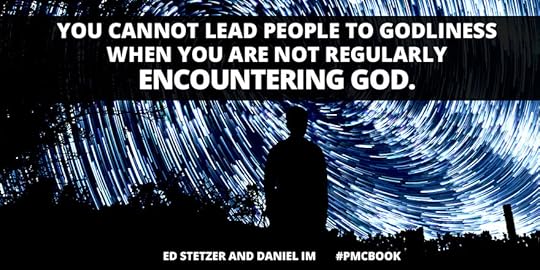

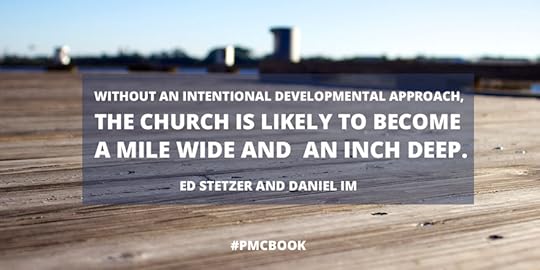
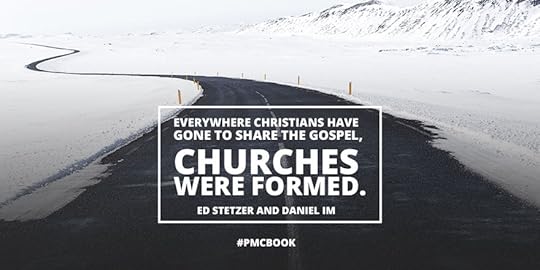

The post Top Quotes and Images for Planting Missional Churches appeared first on Daniel Im.

April 30, 2016
[GIVEAWAY] A Companion Course for Planting Missional Churches
A Companion Course for Planting Missional Churches!
When Ed Stetzer and I wrote Planting Missional Churches: Your Guide to Starting Churches That Multiply (click here to see what’s new with the second edition), we designed a companion course that went along with it, Essential Church Planting. This course digs into the essential knowledge and advice every church planter and multiplier needs to know. Think “Church Planting and Multiplying 101,” in an 18 module, 7 hours of HD video online course format. Click here to learn more.
Well, if you purchase Planting Missional Churches, review the book, and share about it on social media before May 8, you’ll be entered into a draw to win one of three free copies of this $397 course.
Buy, Review, and Share before May 8 for Additional Entries!
Purchase the book (Every purchase counts as an entry for this giveaway. So buy a copy for your friends and staff members!)
Write a short Review on Amazon, Goodreads, and/or your blog (Each review counts as an entry for this giveaway. So copy and paste your review onto several sites.)
Share the book on social media using the hashtag #PMCBook for one additional entry.
Once you’re done, fill out the form below.
Loading…
The post [GIVEAWAY] A Companion Course for Planting Missional Churches appeared first on Daniel Im.

April 26, 2016
Join Me at Exponential East 2016
Here are a few ways that you can grow during one of the largest church planting conferences of the year, Exponential East 2016.
If You’re Not in Orlando…
Tune into the Exponential live stream here for all the main sessions.
Download my new eBook, Multiplication Today, Movements Tomorrow: Practices, Barriers, and an Ecosystem here
If you’re not registered as a Free or Plus member at NewChurches.com, then you can go here to register for free and get the eBook
If You’re in Orlando,
Say Hello to me by visiting one of my workshops listed below
Purchase my new book with Ed Stetzer, Planting Missional Churches: Your Guide to Starting Churches that Multiply for 40% off
My Workshops:
Workshop Session 1: New Trends in Church Multiplication
The Gospel remains the same, but the methods that we use are ever changing. Join us to hear about the newest trends in church multiplication. Where is church planting and multiplication heading in the future? In this session, we’ll talk about different residency models, the future of theological education, trends in bivocational ministry, and the future of collaboration.
Time: Tuesday, 2:30-3:30pm
Location: AP Buildings – AP 8
Workshop Session 2: Using Technology to Unleash a Culture of Multiplication
This isn’t about Twitter, Facebook or Google Analytics. Nor is this a session for geeks or techies either. In this session, we will discuss how you can easily use technology to support a leadership reformation in your church. After all, gone are the days where you would expect 100% of your leaders to show up on a Saturday morning training seminar. How can you train, support, empower and coach your leaders using technology? Come and find out. There’ll be freebies galore, including free access to the latest and greatest conference videos.
Time: Wednesday, 8:45-9:45am
Location: AP Buildings – AP 8
Workshop Session 3: Creating Systems that Fuel a Leadership Movement
Your church will never grow beyond your leadership lid. That is, unless you have the right people on the bus in the right seats, as well as the appropriate systems to support your leadership. In this session, discover how you can develop your volunteers into your future ministry directors, campus pastors or future church planters. You won’t just hear a philosophy, you’ll receive tools and resources to help you do it.
Time: Wednesday, 1:00-2:00pm
Location: AP Buildings – AP 8
Workshop Session 4: How Your Church Can Create a Multiplication Movement
Learn how to create a church multiplication movement in your city. Whether you’re a church planter, a staff member, a campus pastor, a lead pastor, or a denominational leader, you will glean insights to help you cultivate a multiplication movement in your city. When this session is done, you’ll leave with a strategy to employ in your city to see multiplication happen.
Time: Wednesday, 2:30-3:30pm
Location: AP Buildings – AP 8
The post Join Me at Exponential East 2016 appeared first on Daniel Im.

April 21, 2016
Book Review and Best Quotes: Habits for Our Holiness by Philip Nation
 “The spiritual disciplines can help you, but they cannot save you.”
“The spiritual disciplines can help you, but they cannot save you.”I love books written on the spiritual disciplines because I understand that my relationship with God is the plumb line to everything in my life. If I’m not regularly spending time with God in prayer, reading Scripture, and engaging in the other disciplines, my compass gets skewed and there’s fall out everywhere else.
Here’s the problem though: most books on spiritual disciplines lack one thing.
That one thing isn’t great stories, solid theology, innovative ways to practice the disciplines, or motivation. That one thing is how the disciplines connect to mission.
In Habits for Our Holiness, my friend and co-teaching pastor, Philip Nation, addresses what’s been lacking in most books on spiritual disciplines in a readable, yet comprehensive way. It’s precisely this,
Discipline leads to mission.
He believes that the central discipline of the Christian life is love, and that “love is what propels habitual holiness and the desire to follow God into the world for His redeeming mission” (25). If you practice the disciplines, while disregarding others and the mission of God, you miss the entire point. The fact is, discipline leads to mission.
While most books on spiritual disciplines relegate mission to just one of the spiritual disciplines–namely, evangelism–Philip finds a way to masterfully weave mission throughout each and every one of the disciplines, as outlined in the table that I created below. You can download the pdf here.
This is how Philip categorizes the disciplines:
Worship, Bible study, and prayer: These three disciplines form the foundation for our habits for holiness.
Fasting, fellowship, rest, simplicity, and servanthood: These disciplines cause us to love God more thoroughly and cause him to shape our hearts more missionally.
Submission, leadership, and disciple-making: These disciplines help us understand where our loyalties lie in relation to God’s sovereignty.
All in all, this is a much needed book and one that I advise all churches to adopt and use as a part of their discipleship process. I give it a 5/5. You can pick up a copy here.
Here is a list of my favorite quotes from this book:
Love is the central discipline of the Christian life.
The world should benefit from our spiritual growth.
The more often we hold up love, the more habitual our holiness will become.
At the end of the day, we must ask ourselves who we want to become.
When we worship God, we say to everything else, “You are not God.”
Our prayers take on different forms at times than my prayers.
Applying the Bible in community will also help with your spiritual blind spots.
When we learn together, we grow together, and then we can better serve the world together.
Grow up so I can reach out. Reach out so I can grow up.
Prayer, however, is much more than merely rattling off whatever is on the top of our minds or repeating phrases with great passion.
Prayer should drive us to a sense of God’s work in both us and the world around us.
Fasting is a beautiful test of what or Who rules our lives.
The call of God is not to separate from the world but to know how to live in it.
When you use what you own to bless the city where you live, your passions become tools rather than idols.
As you serve, you build up the body of Christ because you reflect the heart of Christ.
We submit because we love Him. He accepts our surrender because He loves us.
The deeper your love for God, the more effective your leadership for others.
Leadership without character is tyranny.
The spiritual disciplines can help you, but they cannot save you.
Spiritual disciplines are paths on which we walk, not treasures to which we cling.
By the way, here’s a picture of my copy of the book as I was designing the chart 
April 19, 2016
The NEW Planting Missional Churches: Changes in the 2nd Edition
When I began working with Ed Stetzer, one of the first things that I did was approach him about revising Planting Missional Churches. It has been such a helpful book to tens of thousands of people around the world, but much of the stories and content needed to be refreshed. Furthermore, there were new questions and issues that planters and multipliers were facing, like multisite, residencies, multi-ethnic churches, theological education, and the difference between denominations and networks.
So we decided to revisit the book, and in doing so, we ended up changing over 50% of the content. The stories, content, and models are different in each chapter. We also wrote five new chapters, completely reorganized the book, and integrated the research we conducted in the new State of Church Planting study, a research partnership of over a dozen denominations on church planting in the U.S., Canada, and Australia.
In addition to rewriting the content in the existing chapters, we wrote five new ones from scratch:
Chapter 8: Multiethnic or Monoethnic Churches
Chapter 9: Multisite Planting
Chapter 27: Residencies and the Future of Theological Education
Chapter 28: Denominations and Networks
Chapter 30: Spiritual Leadership
Who Should Read This Book?
If you’re considering church planting, the first section in this book will give you a good sense as to what it takes and who is qualified
If you are already planting, this book will provide you and your team with different leadership and church models for your plant, as well as a plethora of systems to implement in your church so that you can move towards multiplication
If you are pastoring and considering multiplying, this book will be a tool for you to use to help raise up future church planters
If you teach and train others how to plant, this book can function as a guide for your curriculum
Our hope is that this would be a beneficial and helpful book in your ministry, as you consider planting, are in the journey of planting, or are training others to plant churches that plant churches that plant churches.
Next Steps:
Download the first three chapters by entering your name and email here
Learn more about this book’s companion church planting course, Essential Church Planting
Purchase the book
Review the book
Get the 30+ additional resources that go along with this book
Share the book on social media, #PMCBook
We would be honored if you could partner with us in any one of these ways!
Thank you!
The post The NEW Planting Missional Churches: Changes in the 2nd Edition appeared first on Daniel Im.


